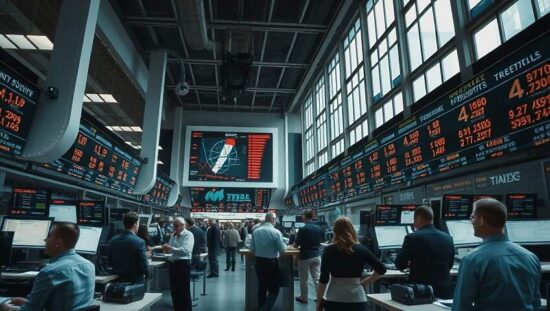The German stock market exhibited a subdued performance on Tuesday, reflecting a growing hesitancy among investors ahead of the upcoming earnings season. The DAX index, after a cautious opening, remained largely stagnant until midday, reaching approximately 24,430 points – a marginal 0.2% increase from the previous day’s closing level.
Market analyst Andreas Lipkow attributed the lack of significant movement to a pervasive sense of caution. “Market participants are currently on the sidelines, awaiting further impetus for trading” he stated, highlighting profit-taking as a key factor impacting shares of prominent companies like Bayer, BMW and Infineon. Conversely, SAP, Adidas and Symrise demonstrated relative strength, while defensive sectors including Deutsche Börse and Deutsche Telekom provided a degree of support to the overall market.
The prevailing sentiment suggests a waning optimism concerning corporate profitability. This shift is subtly fueled by questions surrounding current valuations of both European and US stock markets. The looming earnings reports, traditionally a driver of market activity, are now viewed with increased scrutiny, raising concerns about whether projected profits can justify existing share prices.
Beyond the equities market, the euro weakened against the dollar, trading at $1.1672 – a development that underscores the ongoing pressures on the single currency and potentially reflects underlying economic uncertainties within the Eurozone. The decline in the price of gold ($3,957 per fine ounce) and crude oil (Brent crude at $65.32 per barrel) further supports a broader picture of risk aversion within global financial markets.
This cautious trading behavior raises questions about the robustness of the current market rally and potentially signals a period of increased volatility as investors prepare for the earnings season and reassess their positions. The subdued performance of the DAX, coupled with the currency and commodity price movements, suggests a complex interplay of factors influencing the German and potentially wider European economic landscape.





